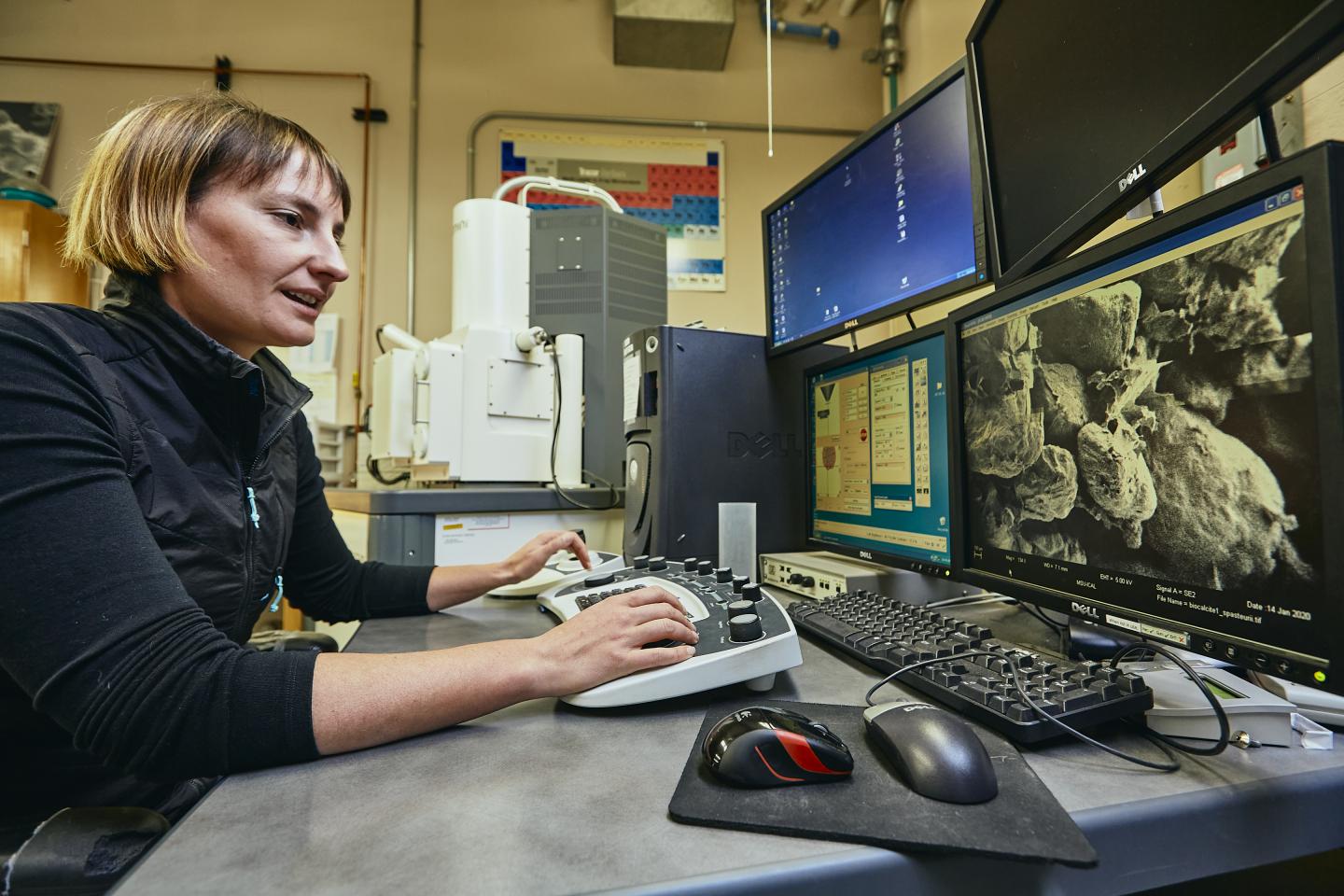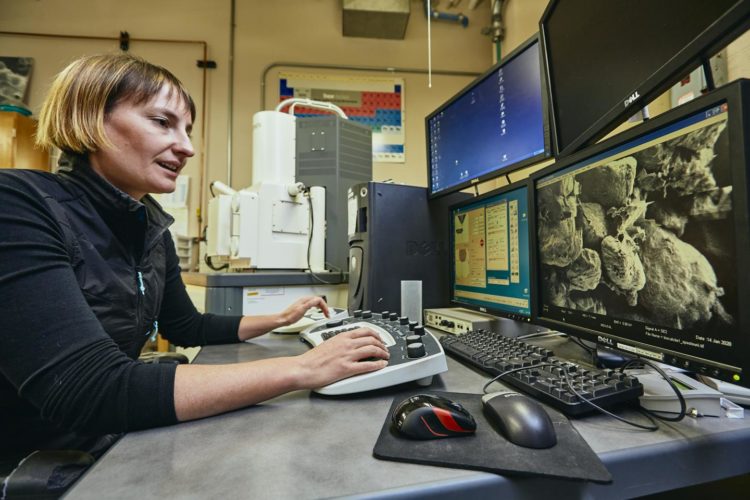
Credit: MSU Photo by Adrian Sanchez-Gonzalez
BOZEMAN — To make a building material that’s alive, Montana State University researcher Chelsea Heveran has a recipe: get some gelatin from the grocery store, make a broth with bacteria called Synechococcus that photosynthesize like plants, add a bit of calcium, then mix with sand and cool until hardened into an concrete-like solid that can be used to replicate itself.
Like many recipes, this one is underlaid by some complex chemistry and is the hard-won result of experimentation, according to Heveran, the lead author of a new paper published in the journal Matter that summarizes the research. The article appeared online Jan. 15 and was featured the same day in a story in the New York Times.
Heveran, assistant professor in the Department of Mechanical and Industrial Engineering in MSU’s Norm Asbjornson College of Engineering, said the study marks the first time that microbes have been used as the main catalyst of a building material in a way that preserves them for later use. The team demonstrated that the Synechococcus cyanobacteria remained alive in the sandy bricks for a month or more under favorable conditions of humidity and temperature.
“You can break off a piece and use it to make new bricks,” said Heveran, who conducted the study with a team of colleagues at University of Colorado Boulder, where she was a postdoctoral researcher before continuing to contribute to the project as an MSU faculty member.
That’s a fundamental improvement over normal concrete, where each batch requires significant amounts of a chemical binder — cement — that must be mined, processed and hauled to the mixing site, Heveran explained. By contrast, she imagines a scenario in which a single living brick could be brought to a remote location; simple additives and some basic equipment are all that would then be needed to transform native earth into infrastructure.
The recipe works because the photosynthesizing Synechococcus cause calcium carbonate, the main mineral in limestone, to form in the solution and solidify the sand mixture. The researchers found that they could reliably control the cyanobacteria’s behavior by adjusting temperature and humidity. High humidity and cool temperatures let the microbes stay alive for extended time periods, while higher temperatures caused the bricks to re-dissolve and promoted microbial growth and mineralization. In this way, one brick could be divided to generate multiple new living bricks. Maximum strength was achieved by drying the material, which killed the microbes.
According to Heveran, the material is surprisingly tough — about as strong as cement mortar but weaker than concrete. “We aren’t ready to build a skyscraper out of this stuff,” she said. Compared to normal concrete, however, the bacterial bricks are relatively easy to recycle by dissolving them and adding new Synechococcus to re-solidify the mixture.
Heveran conducted the research in the Living Materials Laboratory run by Wil Srubar, assistant professor in CU Boulder’s Department of Civil, Environmental, and Architectural Engineering, as well as at MSU, where she joined the faculty in August 2018. She said MSU is known for its research in biomineralization — the process by which living organisms produce minerals that can modify their surroundings. A team of MSU researchers that includes assistant professor of civil engineering Adrienne Phillips has used other biomineralizing bacteria to seal leaks in oil and gas wells. Along with Phillips and Cecily Ryan, assistant professor of mechanical and industrial engineering, Heveran is now researching ways to make an effective concrete filler from discarded plastic that has been shredded and biomineralized to improve its chemical bonding ability.
“We’re very excited to have Chelsea here,” said Dan Miller, head of the mechanical and industrial engineering department. “Her expertise is a great contribution to MSU’s research in materials science and the crossover with biology, which is creating a cutting-edge and growing field in engineering right now.”
Heveran said she draws inspiration from bone, a living material she studied while earning her doctorate at CU Boulder. “Bone is amazing because it’s made by cells — it self-repairs and maintains high strength and toughness for decades,” she said. The new study published in Matter suggests potential for additional properties engineered into building materials using other microorganisms.
“We’re happy with what we engineered — it has some neat properties,” Heveran said. “But we’re thinking of this more as a platform to say, ‘We really could start to engineer living building materials. We could do so much more.'”
###
Media Contact
Chelsea Heveran
[email protected]
406-994-2010
Original Source
https:/
Related Journal Article
http://dx.





